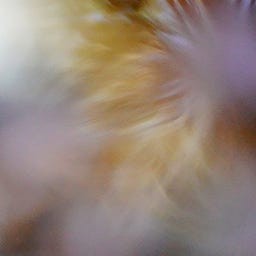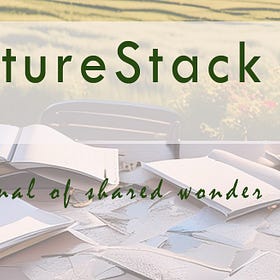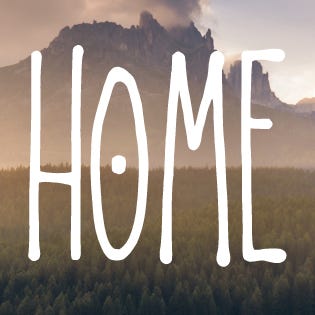Nature writer, n. A person who delights in paying attention, being astonished, and telling about it.1
“I love the idea of describing a place a hundred times. At the time of writing I have described this place 55 times. Doing so has greatly deepened my connection here. I now can’t imagine not writing; it feels like an essential part of my creative process, and of me.” ~ Michela Griffith
My inbox is full of treasure in the form of lovingly observed writing and images about place, encounters both wild and gentle, imaginative kinship and renewed reciprocity. These thoughtful, talented writers kindled in me the desire to learn more about them.
Today’s guest, Michela Griffith is rooted in place and shaped by water, curious by nature. Michela finds beauty in the ephemeral and in small things easily overlooked. Her images are often ambiguous, invariably fluid. Her practice encompasses photographic prints, mixed media originals, handmade books and evocative writing. Water has been her conduit: it has sharpened her vision, given her permission to experiment and continues to introduce her to new ways of seeing.
Her Substack, FLOW: Letters from the moss, is a weekly gift of beauty in your inbox: inspiration and immersion in the smallness of Scotland. Moments of tranquility, the benefit of attention: visual poems from a fluid place.
Why are you drawn to nature writing?
In some respects, I have fallen into it, but perhaps it was inevitable: I have read little else for many years, long before the popularisation of the genre. So a simple answer would be ‘it resonates’.
However I have always enjoyed writing, even the practical or professional: words connect on a deep level. I began in 2013 in order to reflect on a change in my photographic practice and to learn from it. One thing led to another, and I started contributing to On Landscape magazine2. Ten years on I have interviewed over 200 photographers around the world, but my personal writing was often put to one side.
I came to Substack in August 2023 as I wanted to develop a regular writing habit. I hesitate to describe myself as a nature writer, but it is the natural world that inspires me. For well over a decade I made images local to my last home, repeatedly visiting the same few places, always on foot. When we moved back to Scotland in late 2021 I saw no reason to change this. There is something meditative about experiencing a place slowly, again and again. A line by musician and artist Richard Skelton3 says it so well:
Enter into the landscape. Repeatedly.
And in so doing it enters into you.
This place has entered into me. Deeply. It makes me wonder what subconscious need is the root cause.
I began by collating observations from my walks: things that the camera helped me to notice. I write about water and place, photography and art; they are all intrinsically linked to and draw nourishment from nature here.
How does writing about nature affect you, in your work or personal life?
I find joy in writing that flows. Words and phrases I read may fire sparks, or observations made while out prompt me. Much of what I share comes from voice notes that I make while I am walking: direct observation, reflection, a commentary that has an immediacy to it. Along with art and simply spending time outdoors, writing provides me with a place of ease, an opportunity to rebalance.
Another quote, this time from Phillip Edwards’ densely detailed observations in At the Very End of the Road4:
“Yet to me the largest part of a place, that which defines it, are the moments that we experience while present. Have you noticed that when you return to a place it is never the same? Your memory has fixed it like a photo or a video. It is a snapshot to which you can never return to because the place constantly changes and your memory of it has been filtered through your emotional response to it… But what if the place is described a hundred times? How much closer would that bring a reader to capturing its soul?”
I love the idea of describing a place a hundred times. At the time of writing I have described this place 55 times. Doing so has greatly deepened my connection here. I now can’t imagine not writing; it feels like an essential part of my creative process, and of me. It has sharpened my attention further, and at times allows me to connect threads between the media I use, or what I had previously thought to be disparate aspects of nature that engage me visually.
Equally important is reading - I never expected to find such inspiring content within the Substack app. It’s a comfort to find so many people connected with nature and place when reading the news frequently engenders a sense of helplessness.
While outside, have you ever experienced feeling small, lost or in danger?
I’m not sure that I have: we have exorcised the wilderness from our small island. I’m fortunate to be able to spend time in quiet places, or to choose quiet times. I’m happiest in solitude; it allows me to fully connect with the moment.
When I made conventional landscape photos, I went out pre-dawn, and so rarely encountered anyone. I do remember one occasion, on the Northumberland coast, where the peace of a pre-sunset sortie was disturbed; it was probably just boys being boisterous but their shouts when they spotted me did make me uncomfortable, and I didn’t linger.
What’s a favorite memory of nature from your childhood?
I have two favorite memories from when we moved home (I was not yet 5). The first is of the long grass in the back garden; I was sad when my father hired a mower that would cut it as it was a place to lose myself in and find lost toys. There were seven mature trees in the back garden, and the washing line between two of them was perfect to pitch a sheet, make camp, and sit outside to read or draw.
Other than that, I can remember family weekend walks around the reservoirs, usually the same one which at the time didn’t excite me (I do now recognise the irony in that). There were odd things that stay with me - a phase of home made wine making which required trips out of town to collect elderflowers or berries, or rowan berries. Helping to pick raspberries, blackberries and currants in the garden or at a local fruit farm. My relationship with nature has really come from my passion for photography, spending time outdoors walking, and endless curiosity which always prompts me to go round that corner or bend to look more closely, and to keep going back.
What do you hope for, for your writing?
To improve as a writer, to experiment with narrative and output. I’ve made a number of handmade artist’s books where photos have been the driver, but earlier this year I put together a first small book / zine where the words came first and provided the impetus:
The making of this, words laid on words. Picked up, examined, turned over; some discarded, others realigned and polished. An act of deposition.
‘A New Topography’5 draws on my connection with where I now live, and will I hope be the first of several books.
Through writing on Substack I hope to take people outside with me, brighten their day, be generous with the things I find and the transformation these can effect. To provide a place where readers can imagine themselves, find calm, and leave feeling refreshed and ready to connect with and appreciate what is outside their door, down the street, or a block away.
There will always be some small beauty, some brief moment of enchantment to find. It seems that every time I look down my macro lens, I meet someone or something new, so this is a mutual education too. I live on the edge of what in Scotland is called a moss (a lowland raised bog) and I am learning that this is both a place of unexpected beauty and about its value for carbon storage as a result of the incomplete decomposition of organic matter in anaerobic conditions.
I am drawn to the poetic, naturally contemplative, and want to share the deep connection I have with nature and place to lift others up and foster a sense of wonder - what Katherine May recently described as ‘small awe’ or enchantment6. I hadn’t thought of it in those terms, but that is exactly what I seek to convey with my photography and writing.
I wrote recently about how important it is to give ourselves permission to engage with the things that inspire us, and rediscovered this quote by John Muir:
“Everybody needs beauty, as well as bread, places to play in and pray in, where nature may heal and give strength to body and soul.”
A writer or other creative artist who makes you hopeful for humanity and the earth.
It’s tempting to stay on Substack, and I would like to give a shout out to
, , and .However as I work with the visual I would like to introduce readers to two artists that they may not have come across.
Kathrine Geoghegan7 is an artist living & working in County Kildare, Ireland. Her practice is concerned with habitat and the conservation of wild places. Kathrine also explores peatlands, and creates beautiful, vivid, artworks. Her work featured in a film ‘The Peatlands’ which toured Ireland, raising awareness and support to protect and rehabilitate these wild places.
Mandy Barker8 is a photographic artist who focuses on the things that we discard and that end up in the oceans, and was doing so long before the BBC’s Blue Planet brought plastic pollution to the attention of a wider audience. Working with scientists she collects, creates and photographs arrangements of plastic items that may mimic, for example, the movement of a shoal of fish. She uses beauty to challenge our complacency.
If you enjoyed this post, a lovely ❤️ keeps me going. Another way to show love is to share this post with others by restacking it on Notes, via the Substack app. Thanks!
For more inspired nature writing and artwork from the best of Substack, check out the pieces featured in NatureStack journal. By the time of this publication, Issue no.4 will be out.
🍃 03 | NatureStack: shared wonder
In further service to Substack’s nature writers,
curates this lovely directory of nature-focused writers:thanks, Mary Oliver
Beyond the Fell Wall at Bookshop.org
At the Very End of the Road at Bookshop.org
Why Awe Matters is essential reading, in this editor’s humble estimation 🥰
Artist’s website for Kathrine Geoghegan
Artist’s website for Mandy Barker











Thank for sharing, there is so beauty in this to contemplate
A great interview with one of my favorites here on Substack!